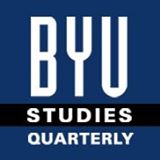BYU Studies

Keywords
Mormon studies, book review, science, science and religion, Henry Eyring, biography
Abstract
Henry Eyring (1901-1981) is undoubtedly the most celebrated scientist produced within the Mormon faith to date. He published over six hundred scientific papers and about a dozen books, and he received almost every prize science has to offer. His theories form the core of modern chemistry. One of his colleagues said, "The contributions of Dr. Henry Eyring touch practically every field of chemical science and technology in a very fundamental manner." Not only was he a brilliant scientist, he was also a man with deep faith in God and in the restoration of the gospel in modern times. This biography by his grandson Henry J. Eyring highlights his scientific achievements and gives the reader a faith-affirming look into the mind and soul of an exceptional man of science. The book captures his simple yet powerful faith, his love of people, his wry sense of humor, and his incomparable work ethic. One needs no scientific background to find resonance with this remarkable man.
Henry Eyring was born in 1901 on a fourteen-thousand-acre cattle ranch in Colonia Juarez in the Church's Mexican colonies. Raised in a large polygamous family, Henry was completely at home on the back of a horse. The author argues effectively that Henry's unusual upbringing--two "mothers," many siblings, a revolution that drove the family out of Mexico, and the demands of the harsh environment of the Southwest--contributed to his eclectic scientific interests, fertile curiosity, and remarkable problem-solving skills. His formal university training was an unusual mix of mining engineering, metallurgy, and chemistry. He was able to study under the best scientists of his day and spent fifteen years on the faculty at Princeton University during the same time Albert Einstein was there. Henry was one of the bright lights in this golden age of science that saw the development of relativity, quantum theory, and many fundamental concepts in chemistry--his own absolute rate theory key among them. He came to the University of Utah in 1946 to be its first dean of the graduate school, a position he filled for twenty years. During his many years as a professor, he produced hundreds of doctoral graduates, personally taught thousands of students, and profoundly influenced many tens of thousands, young and old, through his writing and speaking.
Recommended Citation
Hill, Ned C. and Eyring, Henry B.
(2009)
"Mormon Scientist: The Life and Faith of Henry Eyring,"
BYU Studies: Vol. 48:
Iss.
2, Article 8.
Available at:
https://scholarsarchive.byu.edu/byusq/vol48/iss2/8
